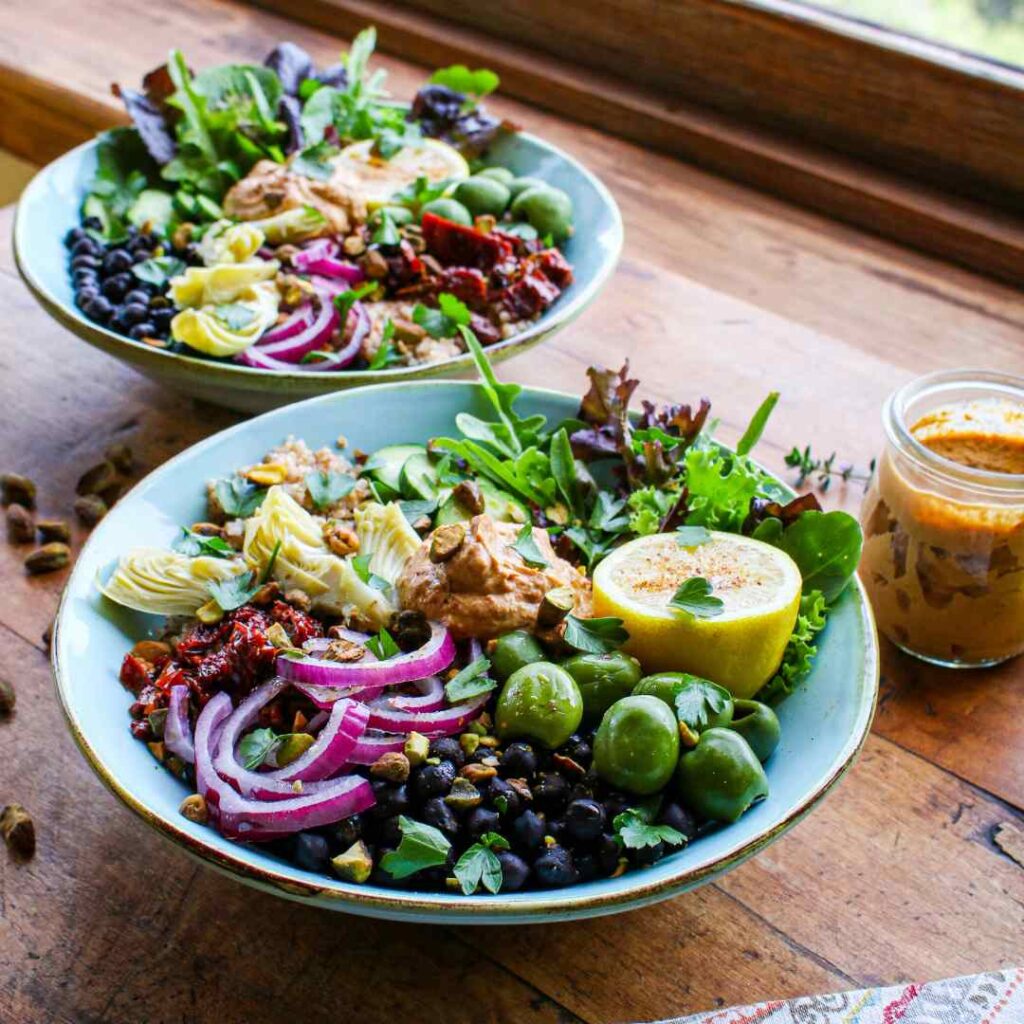Wondering how to make well-rounded high protein vegan meals? It’s all about combining a grain with a plant protein for high quality meals. Put it into practice with these healthy plant protein pairings.
One of the most frequently asked questions for people who eat a plant-based diet is, how do you get protein? And I answer, let me count the ways! The plant world is ripe with protein sources, such as beans, lentils, peanuts, and soybeans! And people in cultures around the world figured out a long time ago that by combining plant protein sources with whole grains you could create sustaining, nutritious, healthful meal combinations. Just look at the tradition of rice and beans in the Caribbean, tofu and rice in Asian countries, beans and corn tortillas in Mexico, lentils and rice in India, and beans and wheat pasta in Italy to see this food and nutrition strategy in action.

That’s not to say that you need to get overly hung up on combining your plant protein with whole grains to create a “complete protein”. Learn more about plant protein quality here. But here’s a quick refresher on protein.
Proteins are made up of smaller molecules called amino acids. Some amino acids are synthesized by the human body, and therefore, do not need to be consumed in the diet. There are also amino acids that we do not produce but are required by the body, so it is essential that we obtain them from our diet, which is why these are referred to as essential amino acids. Animal proteins contain all of the essential amino acids in amounts that meet our bodies’ requirements, so they are considered complete proteins. However, the majority of plant proteins do not contain all amino acids in sufficient quantities to meet our bodies’ needs (soyfoods are considered a high quality protein, as they have good amounts of all essential amino acids in one serving). Therefore, most plant proteins have been considered incomplete proteins. Incomplete, however, does not mean that they are inferior, it simply means that they need to be paired with other foods to become the complete package! You don’t have to pair a plant protein with a grain at each meal, as your body can store the amino acids over 24 hours. However, it’s a good idea to try to balance your plate with a plant protein (beans, lentils, peas, soyfoods, seitan, nuts, seeds) and grain (oats, rice, corn, amaranth, quinoa, millet), as well as fruits and vegetables to meet your nutrient needs over the day.

It’s important to diversify your meals with a variety of different plant protein sources, as well as grains, fruits, and vegetables throughout the day when following a plant-based diet. By consuming a variety of legumes, pulses, whole grains, nuts, seeds, and vegetables each day you can obtain all of your essential amino acids, as well as a greater variety of vitamins, minerals and phytochemicals for good health. Read on to learn about some classic plant protein pairings and my favorite recipes that feature them!

Soy and Rice
In Asian countries, like Japan, Thailand, Indonesia, and China, the high protein combination of soyfoods (like tofu or tempeh) and rice is very common. Tofu made from soybeans is a high-quality plant protein eaten frequently in these diet patterns in many ways, including stir-fries and soups served with rice or rice noodles. There are usually lots of regional vegetables that are served at the meal with tofu or tempeh, including fermented pickles, greens, turnips, peas, and carrots. Follow suit by combining soyfoods in your favorite veggie-rich dishes, such as a Bibimbap rice skillet, tofu rice noodle pho, and tempeh noodle skillet.

Chickpeas and Wheat
Chickpeas are a protein-rich pulse with roots that go back to Mediterranean diets, the same place where wheat originated. So, it’s no wonder that you find this combo in so many classic dishes, such as falafels with pita bread, hummus with pita bread, and chickpea couscous salads. The wheat and chickpea proteins combine beautifully to fill in those amino acid gaps to provide a good source of protein to your day.

Pinto Beans and Corn
In Mexico, the traditional, delicious combo of pinto beans and whole corn tortillas has been a staple providing a nutritious source of plant protein through the centuries. Served with other vegetables, such as cabbage, tomatoes, avocados, radishes, and peppers, this perfect pairing is a balanced meal. Rich in fiber, amino acids, minerals, and vitamins, this healthy pairing forms the foundation of classic dishes we all love today, including tacos, burritos, and tostadas.

Lentils and Rice
In India, the delicious combo of lentils (dal) served in a rich, spicy curry served over a mound of whole-grain basmati rice is a beloved staple that is celebrated to this day. This classic pairing shows how you can make a stunningly flavorful dish with such humble ingredients! And that combination of proteins from the lentils and the brown basmati rice provides a good source of amino acids, as well as fiber, vitamins, minerals, and phytochemicals.
Learn more about plant protein with the following blogs:
- How to Get Plant Protein
- Top 5 Plant-Based Protein Hacks
- 6 Tips for Boosting Protein on a Plant-Based Diet
- Plant Protein Quality
Try more high protein vegan recipes here:
Lemony Garden Peas with Pasta
Vegan Bolognese With Lentils and Walnuts
Moroccan Chickpea Freekeh Eggplant Skillet
Green Bean Mushroom Pot Pie with Mashed Potatoes
Sage Lentils with Squash and Mushrooms
Vegetable Tofu Pho
Sesame Tempeh Grain Bowl
Written by Sharon Palmer, MSFS, RDN with Anna Tobin, dietetic intern.











